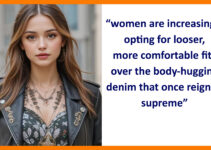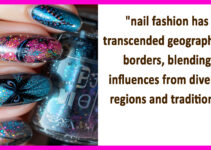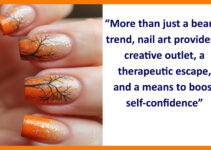Introduction
Fashion has always drawn inspiration from history, and in recent years, period dramas have played a significant role in influencing modern style. From the romantic silhouettes of Regencycore, popularized by shows like Bridgerton, to the sleek, avant-garde aesthetic of retro-futurism, seen in series such as Westworld and The Mandalorian, historical and sci-fi period dramas are reshaping contemporary wardrobes.
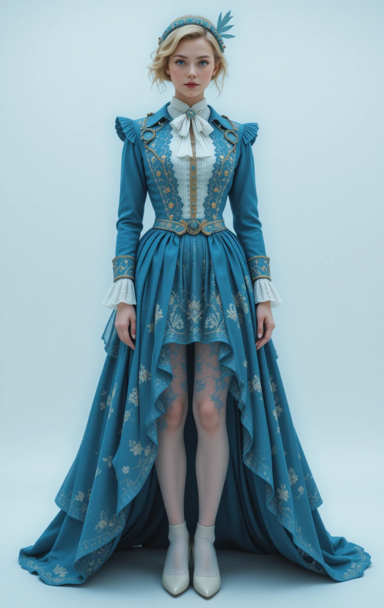
With the rise of streaming platforms, these visually stunning shows have captivated audiences worldwide, leading to a resurgence of old-world charm in everyday fashion. Whether it’s the delicate embroidery of Victorian gowns, the structured corsetry of the Edwardian era, or the metallic, space-age aesthetic of futuristic storytelling, period dramas have made their mark on modern outfit choices. This article explores how these on-screen historical influences have translated into real-world fashion trends.
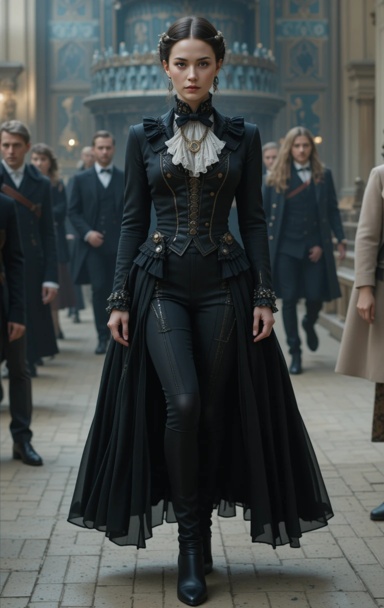
The Rise of Regencycore: A Romantic Revival
One of the most prominent trends to emerge from period dramas in recent years is Regencycore, inspired by the early 19th-century fashion seen in Bridgerton and Pride & Prejudice. Marked by empire waistlines, puffed sleeves, and delicate pastel palettes, Regencycore is all about embracing a sense of romanticism and refinement.

Key Elements of Regencycore Fashion:
- Empire Waist Dresses: A hallmark of Regency fashion, high-waisted gowns elongate the figure and create a soft, feminine silhouette.
- Puff Sleeves & Ruffles: These add drama and an air of aristocratic elegance.
- Pastel & Jewel Tones: Soft blues, pinks, and lavenders are staples, along with rich emerald and sapphire hues.
- Pearl & Cameo Jewelry: Vintage accessories like chokers and brooches complete the look.
Modern Influence:
Brands like Selkie, Nap Dresses by Hill House Home, and LoveShackFancy have embraced Regencycore, offering flowing gowns and lacy details that blend historical elegance with modern wearability. The influence is also evident in bridal wear, where empire-line wedding dresses and intricate lace veils have become increasingly popular.
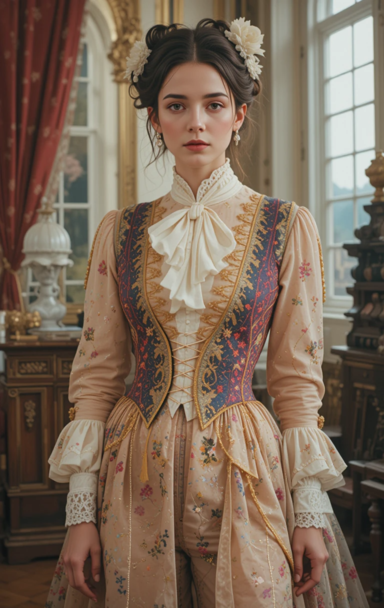
Victorian & Edwardian Elegance: Corsets, Lace, and Tailored Perfection
Period dramas such as Downton Abbey, The Crown, and Crimson Peak have reignited interest in Victorian and Edwardian-era fashion, where corsetry, structured tailoring, and intricate embellishments take center stage.
Key Elements of Victorian & Edwardian Fashion:
- Corsetry & Structured Silhouettes: Modern interpretations include corset tops worn over blouses or as stand-alone pieces.
- High Collars & Lace Detailing: Think delicate Victorian blouses with ruffled necklines and puffed shoulders.
- Long, Flowing Skirts & Bustle-Inspired Dresses: Elegant draping and layered skirts add movement and grace.
- Tailored Coats & Waistcoats: Sharp cuts and fitted designs lend a polished, aristocratic aesthetic.
Modern Influence:
Luxury brands like Alexander McQueen, Dolce & Gabbana, and Gucci have all incorporated Victorian details into their collections. Meanwhile, corsetry has become a major trend, with brands like Vivienne Westwood and Mugler putting a contemporary spin on the structured bodice.
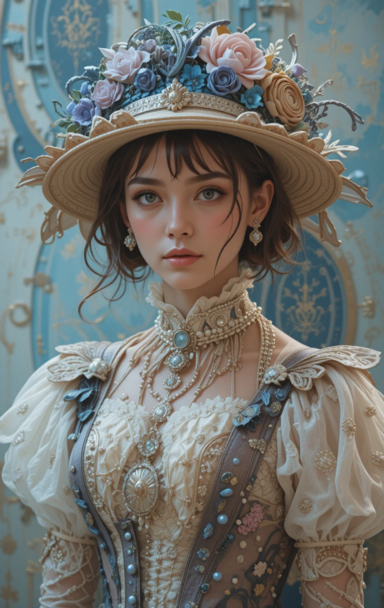
The Roaring Twenties & Art Deco Glamour
The Jazz Age, as portrayed in films like The Great Gatsby and Peaky Blinders, has left a lasting imprint on modern fashion. The 1920s brought about a shift toward flapper dresses, sequined embellishments, and bold, geometric designs—all of which continue to inspire evening wear today.
Key Elements of 1920s Fashion:
- Beaded & Sequin Dresses: Art Deco-inspired patterns add a touch of opulence.
- Dropped Waist Silhouettes: Looser, free-flowing dresses symbolize liberation from restrictive corsetry.
- Cloche Hats & Feathered Headpieces: These add vintage flair to modern accessories.
- T-strap Heels & Mary Janes: Classic footwear styles making a comeback.
Modern Influence:
The resurgence of glamorous, vintage-inspired party wear is evident in collections from brands like Marchesa and Jenny Packham, while Gatsby-inspired cocktail dresses dominate the red carpet.
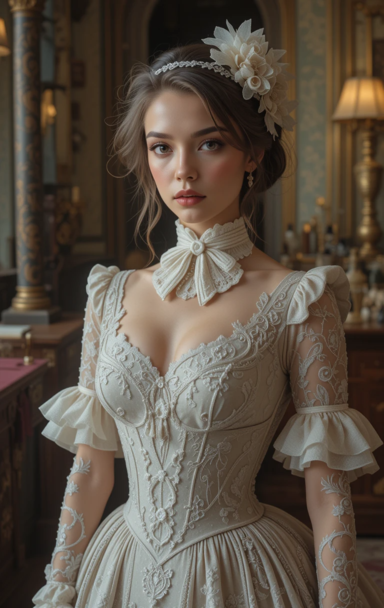
Mid-Century Madness: 1950s & 1960s Retro Revival
Period dramas set in the 1950s and 1960s, such as Mad Men and The Marvelous Mrs. Maisel, have contributed to the resurgence of retro styles, including full skirts, nipped-in waists, and mod-inspired silhouettes.
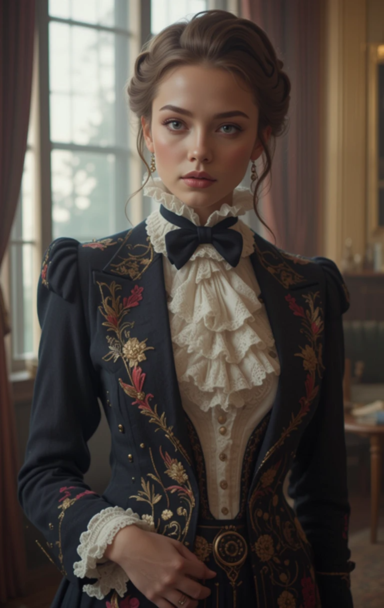
Key Elements of Mid-Century Fashion:
- Cinched-Waist Dresses & Full Skirts: Feminine silhouettes that highlight curves.
- Monochrome & Polka Dots: Classic prints that never go out of style.
- Structured Handbags & Cat-Eye Sunglasses: Vintage accessories that add instant sophistication.
- Tailored Suits & Pencil Skirts: Polished, office-ready attire.
Modern Influence:
Fashion houses like Dior, Prada, and Michael Kors frequently incorporate 1950s silhouettes into their collections. Reformation and & Other Stories also offer vintage-inspired, everyday wear options that echo mid-century charm.
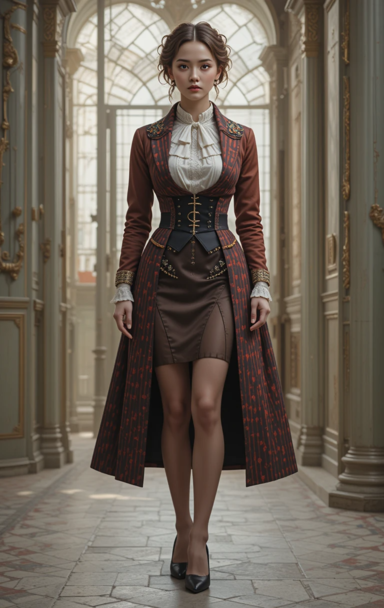
Retro-Futurism: A Glimpse into the Future with a Nod to the Past
Beyond historical fashion, sci-fi period dramas like Westworld, Blade Runner 2049, and The Mandalorian have introduced retro-futurism, a fusion of past and future aesthetics. This trend reimagines vintage styles through a futuristic lens, resulting in metallic fabrics, exaggerated silhouettes, and high-tech materials.
Key Elements of Retro-Futurism:
- Metallic & Reflective Textiles: Shiny, sci-fi-inspired fabrics that create a space-age feel.
- Structured & Architectural Designs: High-shouldered coats, asymmetrical hemlines, and bold geometric patterns.
- Monochromatic & Neon Color Palettes: A mix of muted pastels and vibrant neon hues.
- Techwear-Inspired Pieces: Functional, futuristic garments like jumpsuits, sleek boots, and utility belts.
Modern Influence:
Designers such as Iris van Herpen, Balmain, and Rick Owens are pushing the boundaries of futuristic fashion, merging digital aesthetics with historical references. The rise of AI-generated fashion and smart fabrics is also contributing to this growing trend.

How Period Dramas Are Reshaping Everyday Fashion
Period dramas don’t just inspire runway fashion—they influence everyday street style, bridal trends, and even workwear. With social media platforms like Instagram, TikTok, and Pinterest acting as catalysts, vintage and retro aesthetics have become more accessible than ever.
Why Period Drama Fashion Is So Popular:
- Nostalgia & Escapism: People are drawn to the romanticized beauty of historical fashion.
- Timeless Elegance: Many vintage silhouettes flatter all body types and transcend fleeting trends.
- Sustainability Movement: The rise of thrifted and vintage clothing aligns with the push for sustainable fashion.
- Customization & Personal Expression: Fashion lovers can mix eras and aesthetics to create their own unique style.
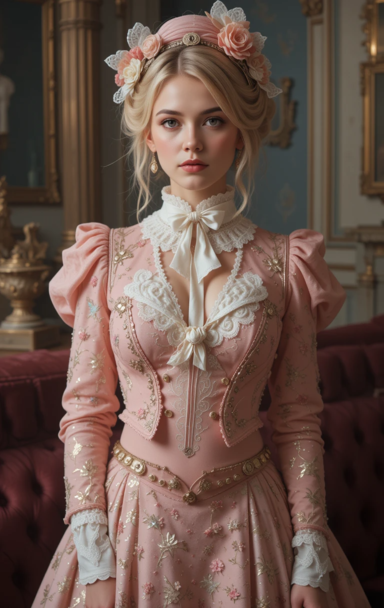
Conclusion
From Regencycore’s delicate femininity to retro-futurism’s bold innovations, period dramas continue to shape modern fashion in unexpected ways. The rich visuals and timeless aesthetics of historical storytelling have found their way into mainstream fashion, proving that style is cyclical—and that the past will always influence the future.
Whether through corseted silhouettes, 1920s embellishments, mid-century tailoring, or futuristic metallics, one thing is clear: period dramas will continue to dictate trends, inspiring both designers and everyday fashion enthusiasts alike. As long as audiences remain captivated by these cinematic spectacles, the fashion world will keep borrowing from history, reinventing old styles for the modern era.

